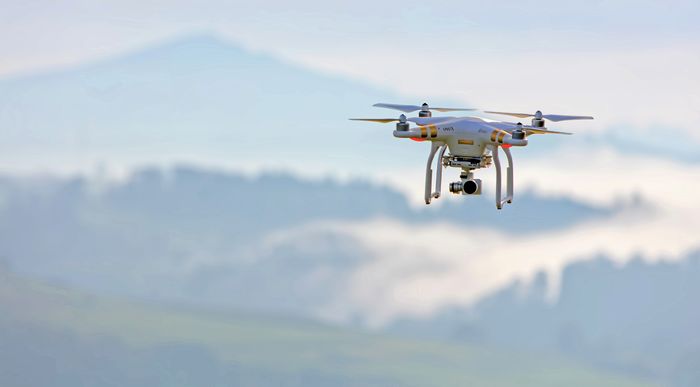A ‘pivotal’ moment for the move towards flying cars
Marie-Madeleine Fuerbeth details Pivotal’s new plan for widespread consumer roll-out of their new ‘flying car’, the ‘Helix’

In the past century, we have come so far technologically that flying to the other side of the world is accessible to many of us. But this is flying commercial – it makes us think of sleeping masks and back pain, not the grandeur of ascendancy Saint-Exupéry described in his tales. But hey, the dream of you and a pair of wings soaring over the horizon is closer than expected. In 2024, Pivotal, a California-based company backed by Google’s Larry Page, plans to introduce its game-changing one-passenger electric aviation vehicle (EAV). And you won’t even need a pilot’s licence to fly it.
“And you won’t even need a pilot’s licence to fly it”
Pivotal announced the 2024 launch of their new EAV dubbed the “Helix” in early October this year. CEO Ken Karklin not only promises “personal aerial freedom” but also production at scale, therefore making it accessible to all aviation enthusiasts who are willing to pay. The Helix, boasting a futuristic and sleek design through carbon composite materials and a vinyl finish, will be available for purchase at $190,000 (£150,000). Utilising the technique of electric propulsion, this six-rotor aircraft takes off and lands vertically with fixed tandem wings.
However, Pivotal is just one player in the rapidly growing industry of electric vertical take-off and landing vehicles (eVTOL). In recent years, the eVTOL industry has seen significant progress in technology and manufacturing thanks to substantial investments from funds like Cathie Wood’s ARK and strategic partnerships with companies like Uber. According to different reports, the market for eVTOLs will grow with a compound annual growth rate of between 20% and 50% in the following years, reaching a market cap of over $30 trillion in 2030 – McKinsey confidently predicts they will outcompete traditional airlines by 2030.
The market is currently dominated by American companies Archer Aviation and Joby Aviation; Ehang, a Chinese company; and Lilium, the only European company. Joby Aviation is planning to launch a ride-sharing service in New York by 2025 that will transport a pilot and four passengers per vehicle from Manhattan to JFK and Newark airports. Interestingly, several start-ups are receiving financial and technical support from car manufacturers, including Toyota, Hyundai and Porsche. Both Boeing and Airbus are also currently developing their own models of eVTOL aircrafts.
Without doubt, personal electric flight is becoming a reality, but accessibility depends on revising and adapting current aviation regulations. In July 2023, the US Federal Aviation Administration (FAA) released “Innovate28”, a comprehensive plan detailing how to manage airspace, establish certification specifications, and develop new infrastructure necessary for the scale of urban aviation until 2028. For now, eVTOLs will have to fly on established routes controlled by Air Traffic Control.
“Without doubt, personal electric flight is becoming a reality”
For Pivotal especially, regulations could pose a significant obstacle to widespread consumer adoption. In order to eliminate the need for air control and pilot licensing, the Helix must be a class G vehicle, meaning ultralight as defined in Federal Aviation Regulation Part 103. This confers overall performance limitations. The weight of the battery is directly tied to its capacity; however, to maintain the Helix’s ultralight classification, the battery can only be so heavy. This has resulted in a mere range of 20 miles, which pales in comparison to Joby and Lilium’s target ranges of 150 miles. The distance from Cambridge to London is around 50 miles, so you couldn’t even take your Helix on a quick trip to the city. Even the passenger’s weight is restricted to a maximum of 100kg. Perhaps Pivotal is depending on a dramatic change in the current regulatory environment. Nonetheless, it’s a fact that ultralight vehicles have yet to be taken into account in regulatory initiatives such as Innovate28.
Now that eVTOLs, including the Helix, have advanced from the prototype stage to becoming commercially available vehicles, we can begin to speculate on how our cityscapes might change in the near future. We can paint a rather idyllic picture of metropolitan centres around the world benefitting from effects of fewer cars – expansion of recreational zones, less inner-city noise, and a marked improvement in air quality. Generally, a rather utopian scenario.
Cambridge probably isn’t the number one priority for the roll-out of eVTOLs, but smaller communities are just as affected by debilitating traffic jams and the need for carbon-neutral transportation. Options like the Helix are affordable and deploying them to park-and-ride centres could drive a hugely beneficial change in our urban environment. Forget the expansion of e-scooters – why not give us flying cars and allow us to enjoy some more Saint-Exupéry-esque adventures?
 News / Candidates clash over Chancellorship25 April 2025
News / Candidates clash over Chancellorship25 April 2025 Interviews / Dr Ally Louks on going viral for all the wrong reasons25 April 2025
Interviews / Dr Ally Louks on going viral for all the wrong reasons25 April 2025 Music / The pipes are calling: the life of a Cambridge Organ Scholar25 April 2025
Music / The pipes are calling: the life of a Cambridge Organ Scholar25 April 2025 News / Cambridge professor paid over $1 million for FBI intel since 199125 April 2025
News / Cambridge professor paid over $1 million for FBI intel since 199125 April 2025 Arts / Plays and playing truant: Stephen Fry’s Cambridge25 April 2025
Arts / Plays and playing truant: Stephen Fry’s Cambridge25 April 2025






